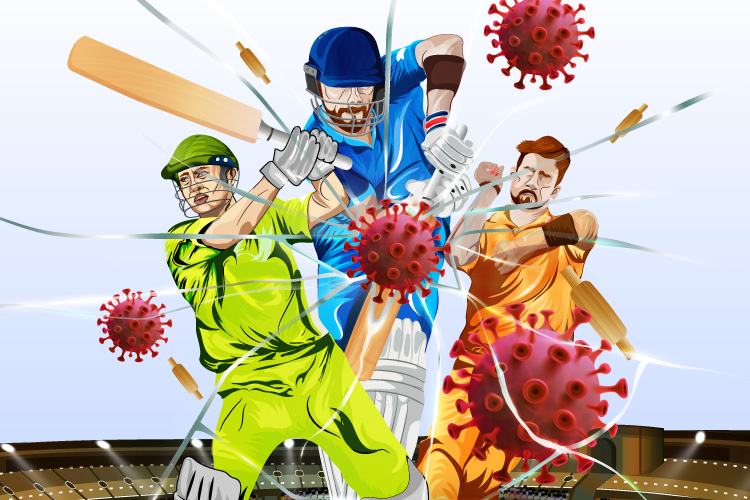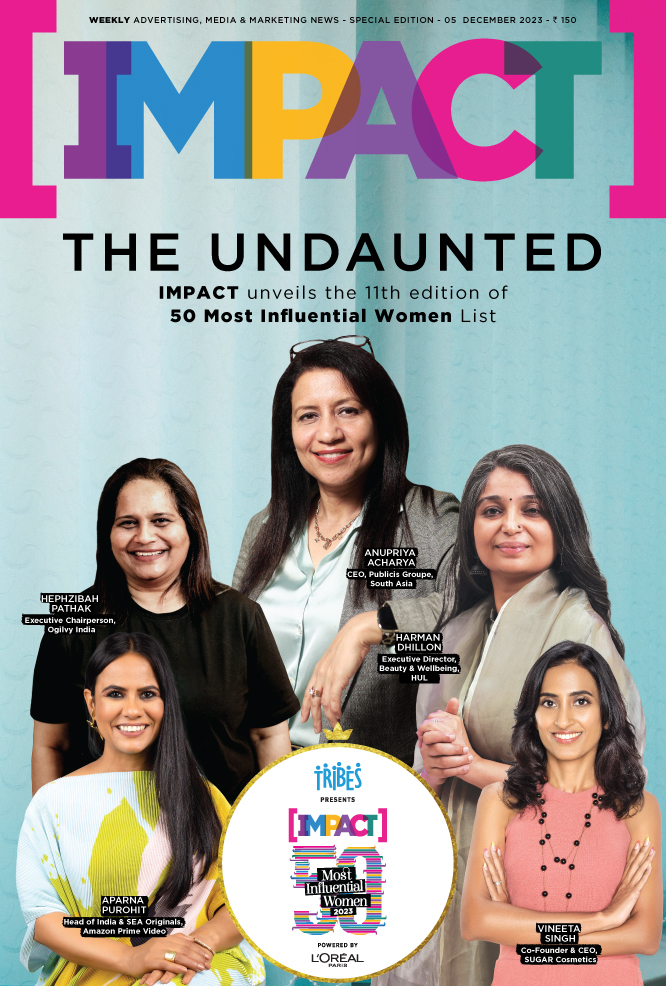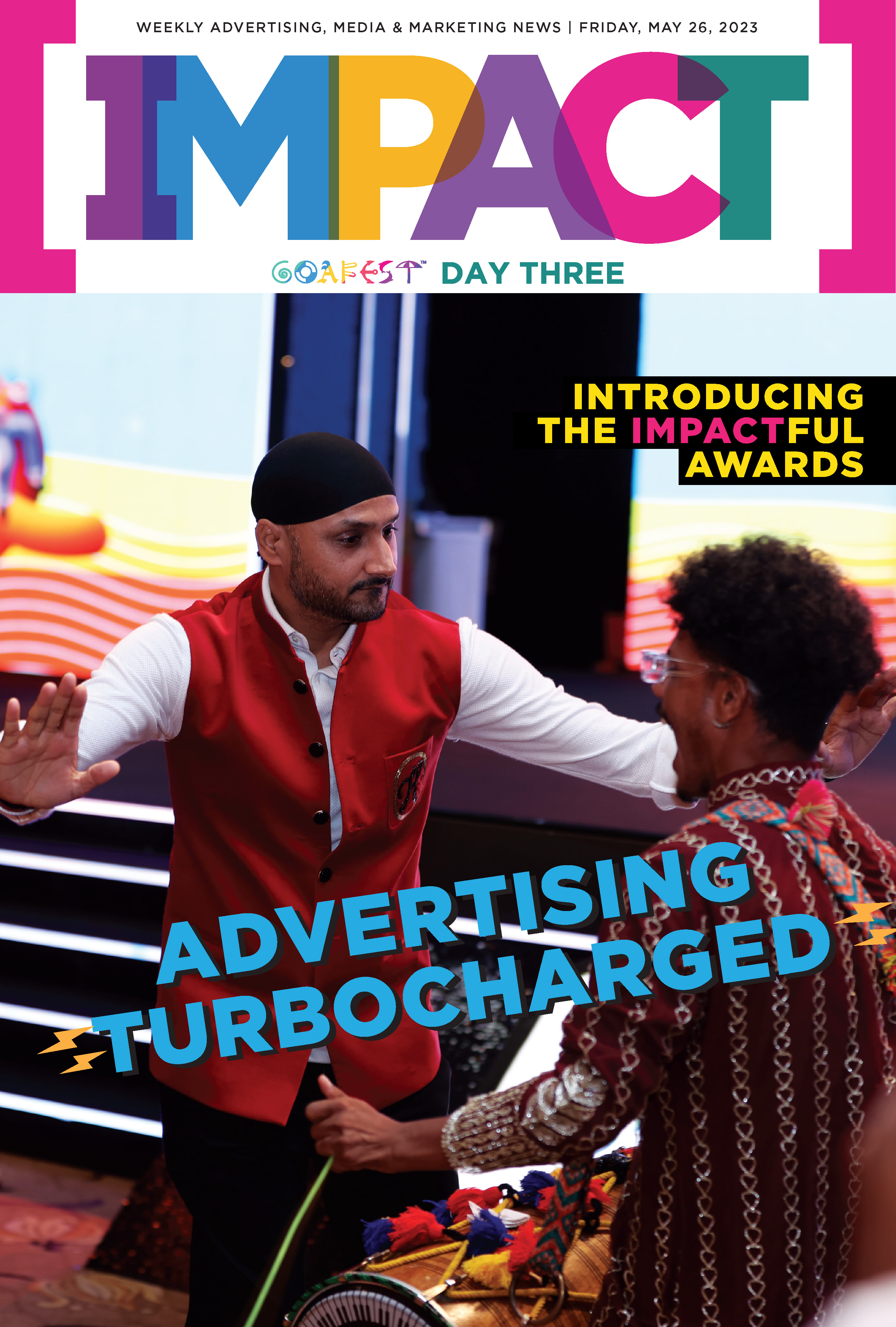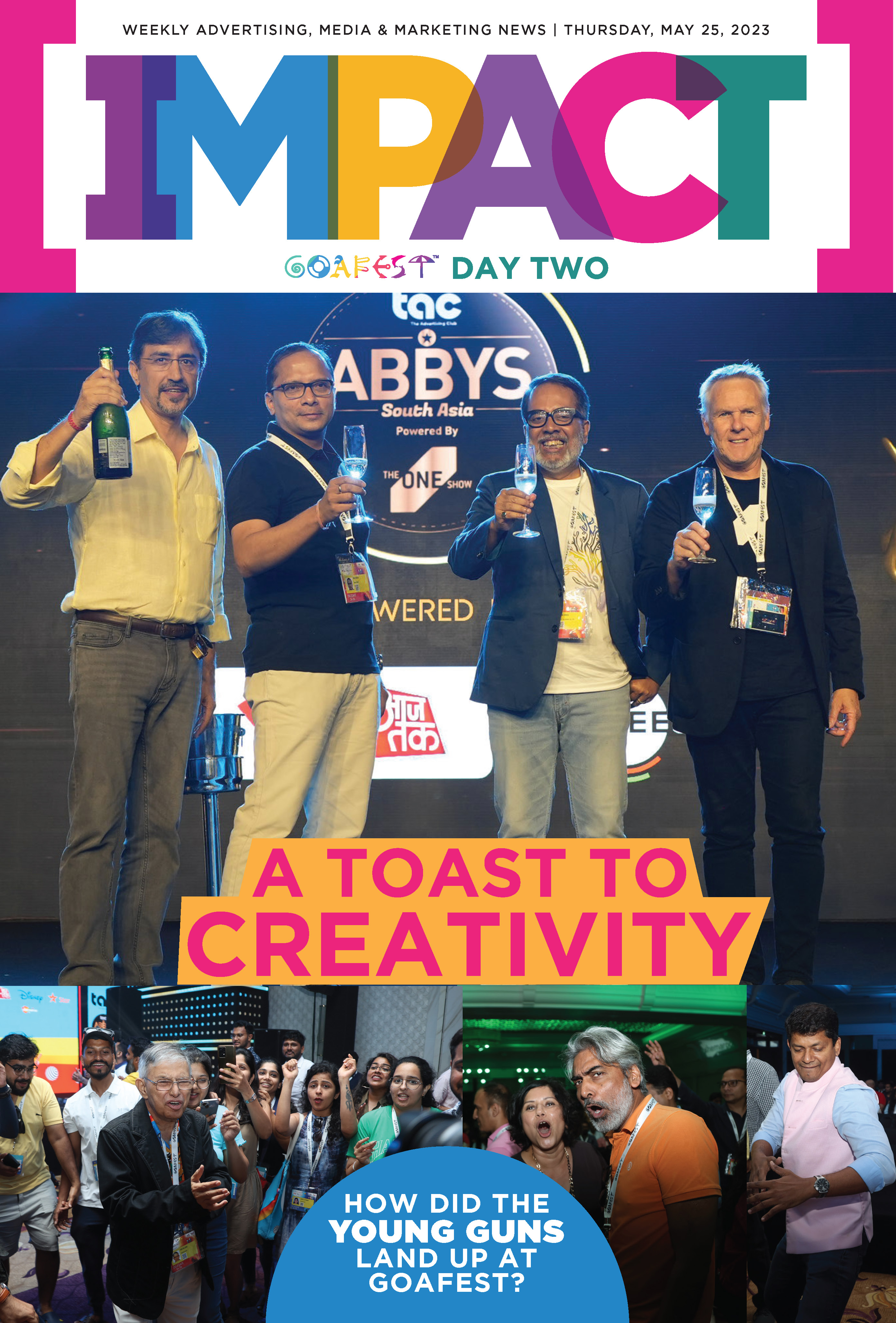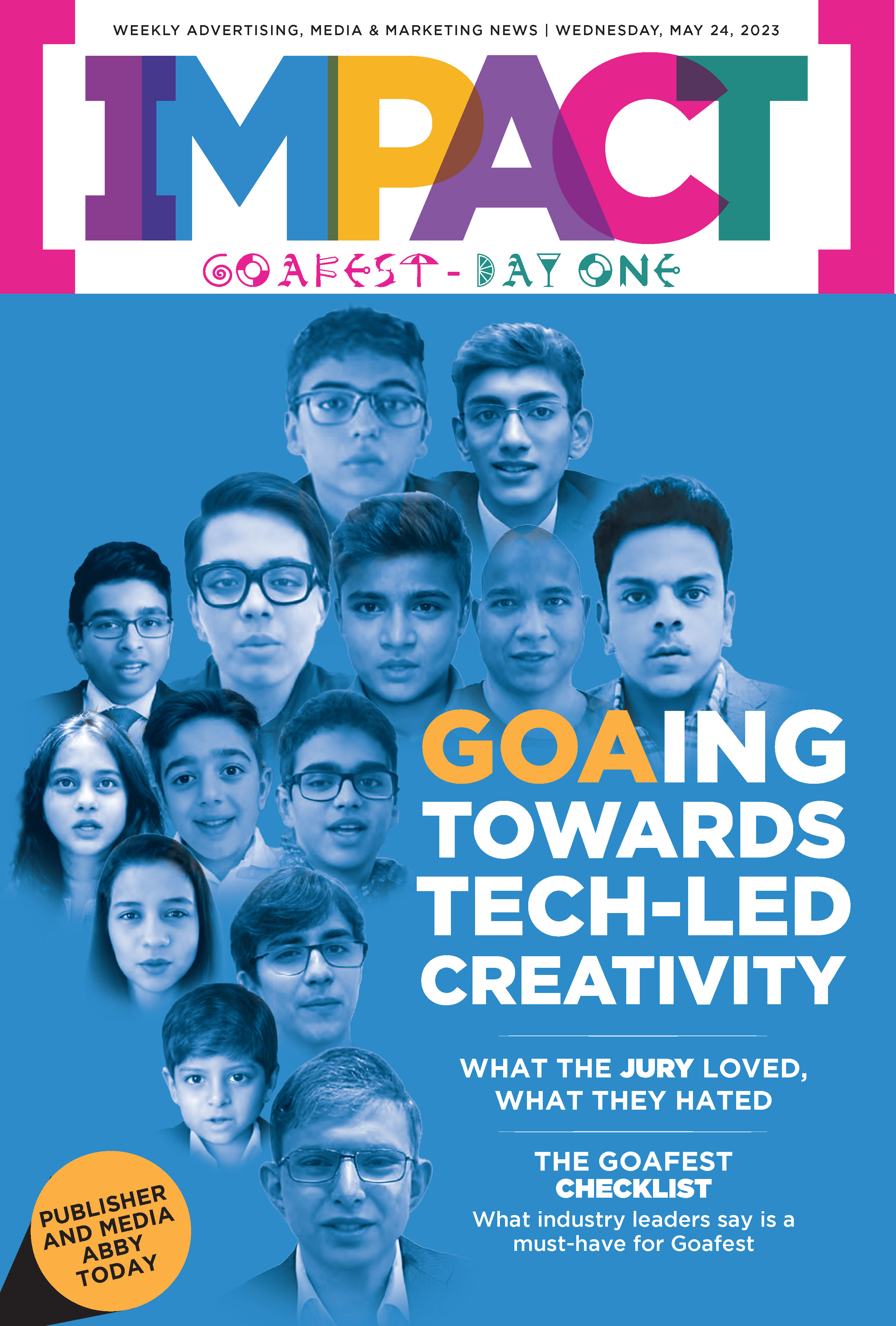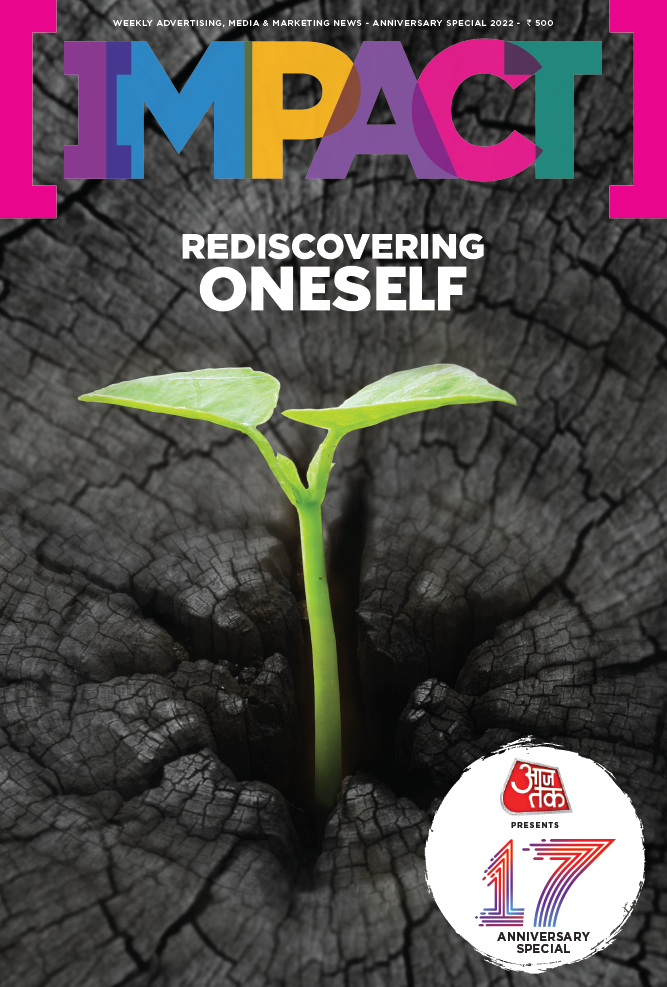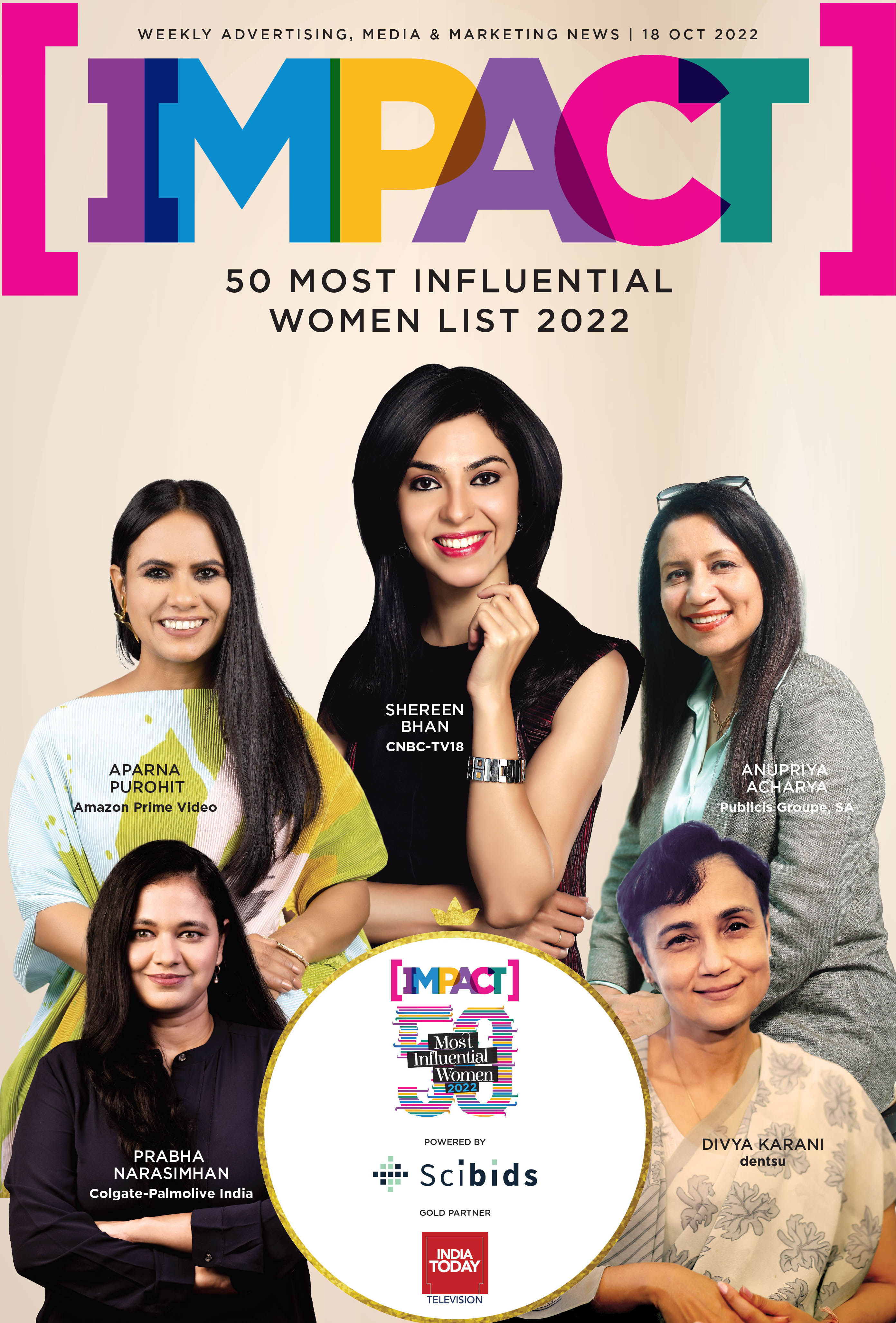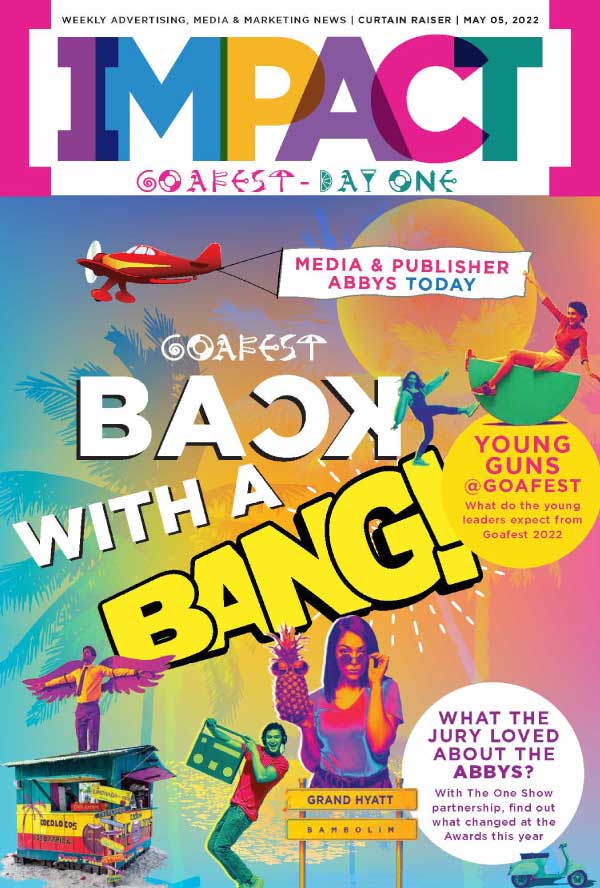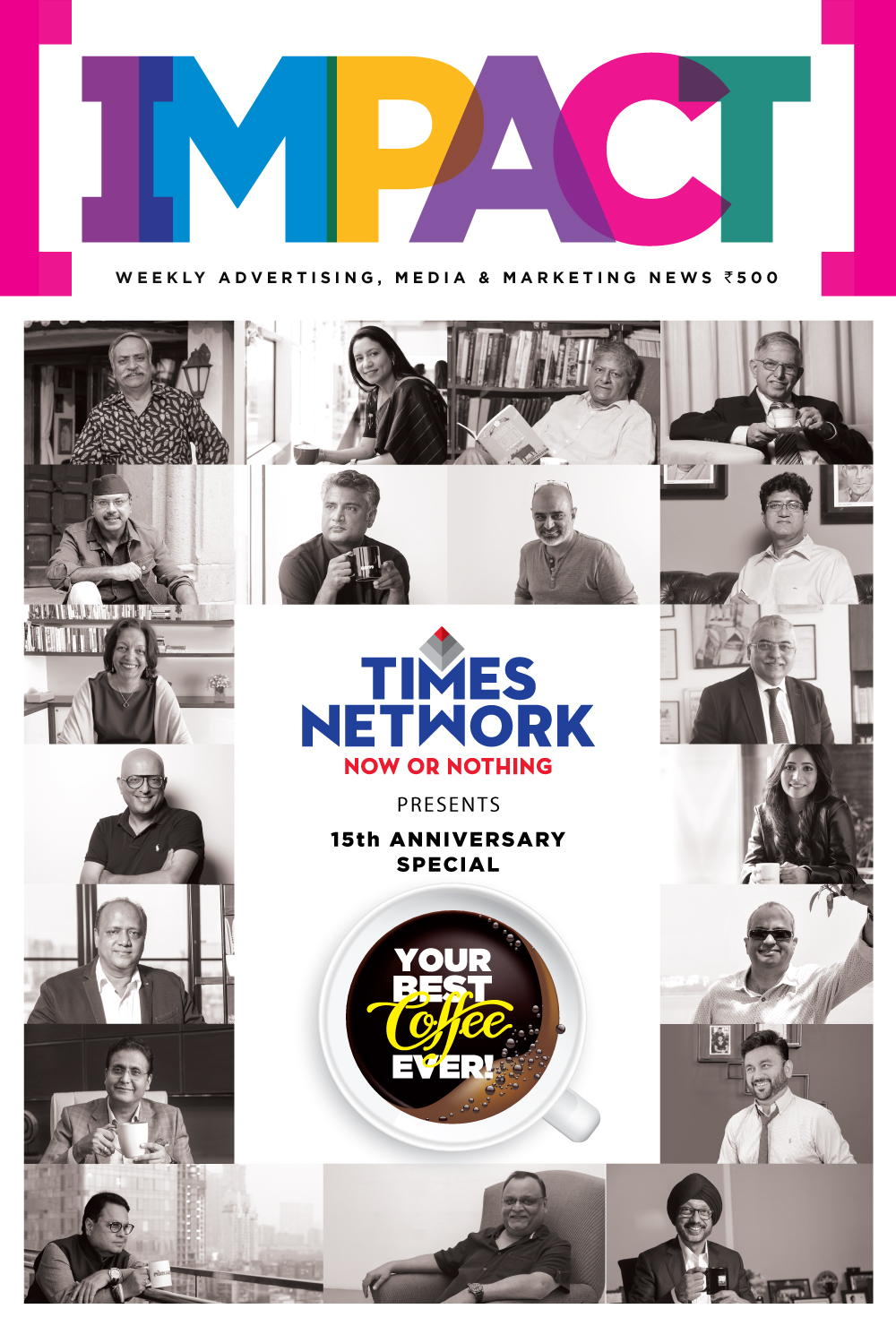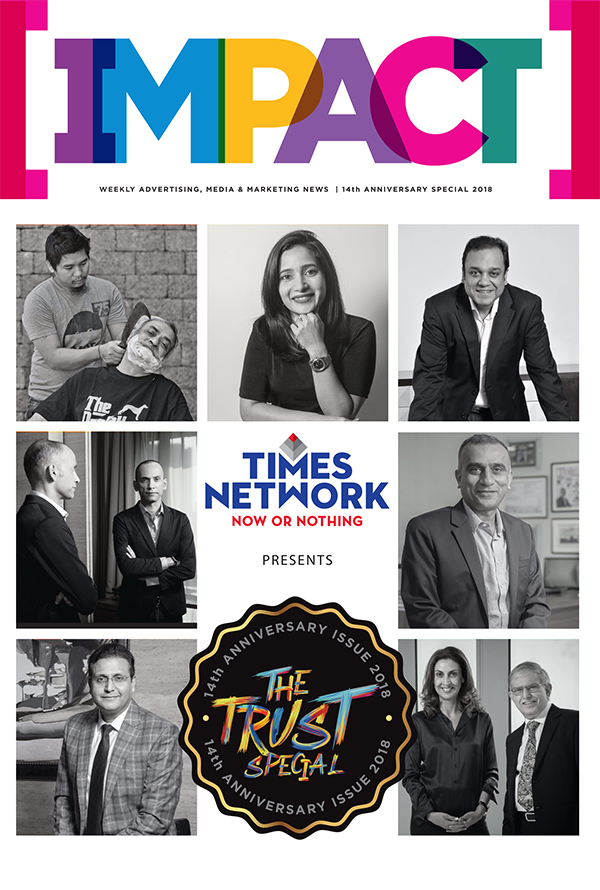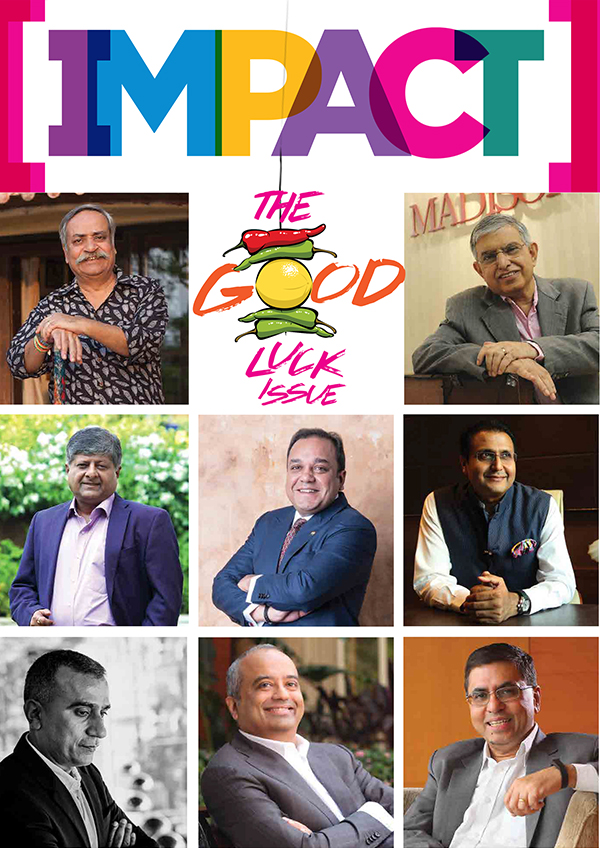2021 was supposed to be the year of revival, when AdEx was slated to recover from the biggest low it witnessed in over a decade. But with the second wave here, the industry seems to be in a quandary yet again. We had seen even the travel brands which were the worst hit during the pandemic, come back to advertising with significant campaigns in the first part of this year. Quarter 2 of 2021 (calendar year) was especially meant to be the period when things start looking up again for the industry with IPL being the highlight, and they were until the second wave struck the country like lightning.Anand Bhadkamkar, CEO, Dentsu India says, “First quarter was really decent for all the businesses, including advertising, but now May, June is definitely seeing that stress. The government said we may hit the peak in May. So it’s going to be more of cautious optimism. Clients are reviewing their budgets, marketing plans and spends but it’s a bit early in the day to call out what would be the actual impact. We are looking at it on a case by case basis and not a full blown plan for the entire year.”
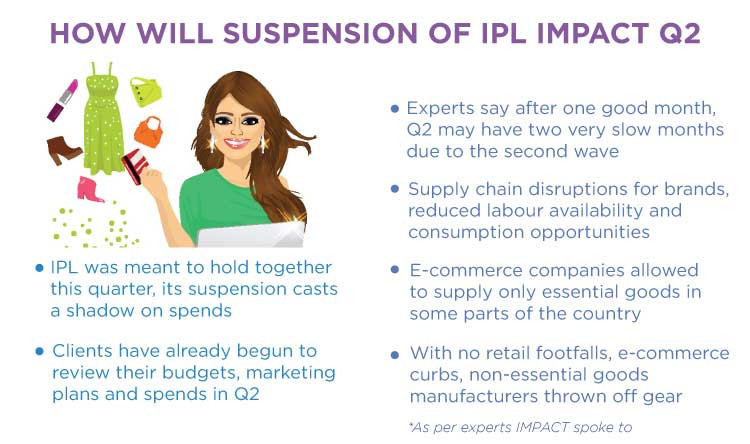
Remember as per the Dentsu India and exchange4media.com report ‘Digital Advertising in India 2021’, the advertising industry was expected to make a comeback and grow by 10.8% to reach Rs 62,577 crore by the end of the year 2021 while the Pitch Madison Advertising Report, 2021 has predicted a 26% growth for ADEX in 2021, bringing advertising expenditure to Rs. 68,325 crore, similar to 2019 levels.Talking about the impact of the second wave, Sam Balsara, Chairman and Managing Director, Madison World says, “I must confess we failed to recognise that a second wave could hit us with such intensity. It’s a bit too early to estimate the impact of the second wave. We need to wait till the numbers stabilise and start seriously dipping. However I do feel that the negative impact of the second wave on the economy will be nowhere near what it was in the first wave because we are now conditioned to live and succeed in the new reality.”
The IPL blow
IPL was meant to be the property that holds together this quarter, but with the suspension of this season midway, there is a question mark on whether advertiser spends can be successfully diverted and whether it will now really make Q2 feel the pinch in addition to the situation worsening owing to the pandemic. The head of a media agency who didn’t wish to be named says, “Advertisers for whom this season is critical like air conditioners, ice-cream brands will divert monies immediately to other channels/ platforms as business/ sales targets have to be met. Advertisers for whom this is not the only key season may also continue campaigns on other platforms depending on how well the first four weeks of IPL has impacted business. Star will try and get these advertisers to put money on the rest of their network to minimise loss of earnings as a group. They may be given good deals, sponsorships on other Star shows, etc.” Others say that with the possibility of a return of the remaining season of IPL in the next couple of months, it is not exactly a dead end for the committed spends on the league.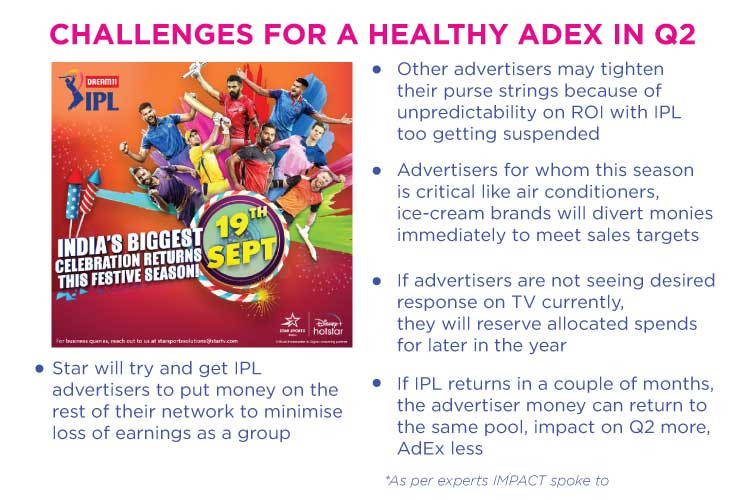
Experts IMPACT spoke to said that marketers are being conservative right now as far as newer spends are concerned. In fact, supply chain disruptions due to lockdowns and e-commerce companies being allowed to supply only essential goods in certain parts of the country like Maharashtra has thrown sectors like consumer electronics and handset manufacturers off gear, and some of these brands have already rolled back spends for this quarter. Navin Khemka, CEO - MediaCom South Asia says that there is no reason for sentiments to tank just yet and it may all depend on the extent of the lockdown and as far as IPL is concerned 50% of the matches have taken place so the remaining spends will get re-ploughed into fresh content, so we are not talking of big monies here. He further explains the impact of the second wave on advertising overall “In the current lockdown the TV content producers are well prepared. They are moving their shoots to different location and under a bio bubble. This will ensure that there is continuity of content and hold viewership and ad revenues steady. I agree that circumstances like the second wave can have an impact on the AdEx and performance of mediums. But unlike last year brands and agencies have learned our way around which will help us navigate this period better. The situation is much more promising than 2020. With the growth of digital and agencies investing in systems, delivering solutions to brands and clients has changed a lot over the last 12 months.”
If one were to go by the PMAR report of 2018 and 2019, the April-May-June period and the October-November-December quarters are the star performers of the year. As per media planners the second half of the year contributes to around typically 56% of AdEx, with the last four months accounting for roughly 43% of the annual spends owing to the festive season.. We saw advertising bouncing back between Jan-April. If the wave subsides in a couple of months; with the festive season and T20 World Cup, and a possibility of a return of IPL in this year, we can still do a good amount of damage control to the AdEx.
Categories hit
A category that may be badly hit in the upcoming months is auto. While most of the passenger car manufacturers’ wholesale volumes in April look good, even when compared to the pre lockdown 2019 figures, the next two months may not bring such good news. Typically monsoon is not considered great for possession of new cars, so the right time for car sales was considered to be now. People who had put off purchase last year were renewing interest in buying a two-wheeler or a four-wheeler this year. And perhaps some of that demand has already been captured. But now with car showrooms largely shut and the industry facing disruptions in supply chains, labour availability, retail operations and logistics, sales may take a hit and thus advertising campaigns and spends will take a beating for the next two months.
The general sentiment is that telcos may advertise less to acquire and more for retaining customers who had upgraded to 4G in the first wave, so perhaps not at the same level. Online gaming and fantasy players will continue to spend in higher volumes as this is the best period for them, once IPL and cricket is behind us, those in poker, rummy etc. will join the bandwagon. FMCG will continue to advertise, especially in the summer specific categories, even though at a slightly lower level.
Navin Khemka says, “We predicted FMCG and e-commerce to lay the foundation of the growth, while education, auto, telecom and retail were supposed to be the other drivers. I would say the summer categories could slow down if at all. The months of April/May/June are very critical for them. On the other side a lot of categories like ed-tech, health, computers, and mobility are seeing a huge increase in demand.”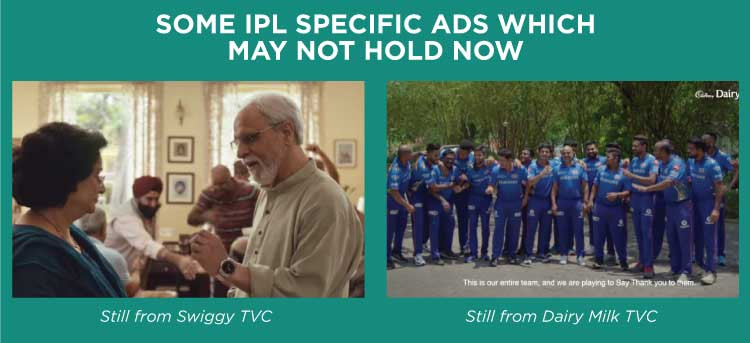
When IMPACT spoke to a confectionary major about whether they will slash spends in the upcoming months because of the second wave, the spokesperson responded, “Haven’t decided yet. It will all depend on how the next 2-3 weeks pan out. Having said that, we anyway don’t spend much in the May June period, it is low season.”
As per a media planner who wanted to remain anonymous, “Unless a category is super confident that there will be demand, I don’t see why anybody will want to launch a product in the current situation unless it is contextually relevant. Also you don’t want to launch a new product when distribution is hit. For e.g. last year throughout COVID, Britannia’s sales teams were out in the market but this year even an established brand like Britannia with a good distribution system has asked their sales teams to not go out as this particular variant of the virus is extremely infectious. Trains, trucks, all have also been diverted by the government to focus on transportation of medical supplies, which will also have an impact on distribution. If distribution is not in place, there is no point in doing advertising. Also those that will launch products will probably pick a different route like influencer marketing versus the traditional advertising route.”
According to Anshuman Chakravarty, CMO, Orient Electric, “The current wave of COVID-19 is casting a spell on an otherwise booming period of sales. Lockdown, containments and with rising cases, markets are not fully functional, and we are getting reports that footfalls have also gone down. Looking at the emerging situation we are evaluating our planned advertising investments, and for sure we will not be aggressive now as far as spends are concerned. However, we remain to be bullish on e-commerce sales and as experienced last year we expect a decent sales growth in e-commerce channels and the ad cuts therefore on online may not be significant.”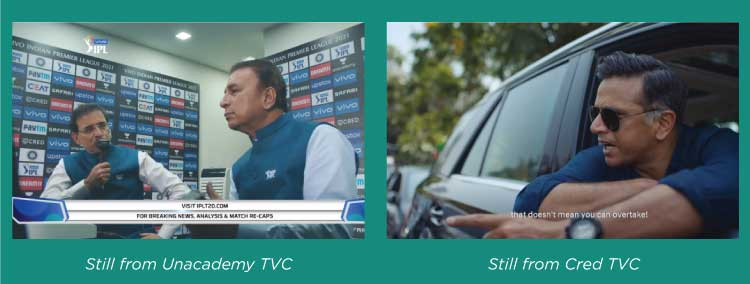
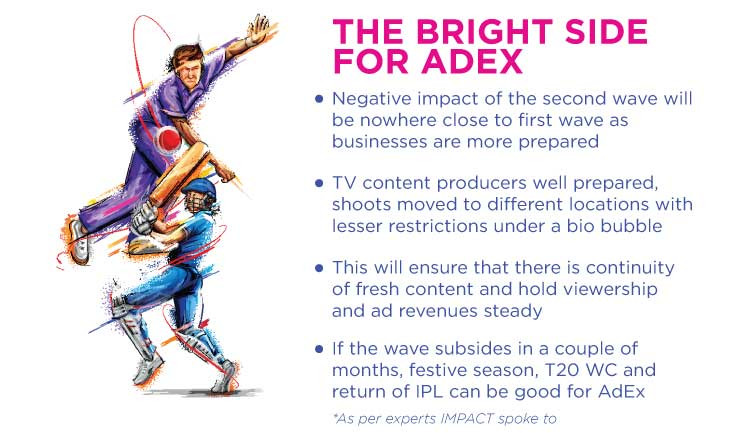
Impact on mediums Talking about the impact of the current wave on the medium which benefitted the most because of the pandemic i.e. Digital, Heeru Dingra, CEO, WATConsult says, “When you look at spends I don’t think digital wallets have shrunk but yes, marketers are very cautious about their business objectives and are hesitant on ad revenue because there is uncertainty on the return on investment. So spends have slowed down, however they haven’t come to a halt yet. The IPL suspension is another setback that will urge brands to pivot but once the league resumes, the spends will be back in place. If the spike in cases continues well into July-August, then they will relook at their wallets and start pushing the spends to the festive period. Customers are not in the mindset to buy, or even to look at products or services unless it safeguards them from the current crisis. But if I were to compare the situation to last year, health wise chaos is more but it’s lesser from a business standpoint as most businesses are heavily digital-enabled.”

Anand Bhadkamkar says, “Cinema, OOH and Experiential will be at the receiving end of the new wave, the malls had started seeing some footfalls, business had come back to almost 80% to 90% of pre pandemic levels, and it’s again back to 10% to 15%.”
A media planner who didn’t wish to be named said, “OOH and Radio will be badly hit, demand has reduced by almost 50%. In my opinion Print is affected by a good 30-35% even though circulation is in the range of 80-90% which last year had gone down to as little as 50%. Print primarily was used by categories like education, auto, real estate and durables, most of the categories are not essentials right now except education but with education taking a new virtual format, most ed-tech clients like Byju’s,




